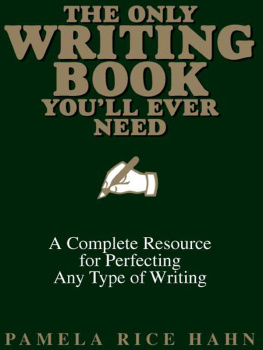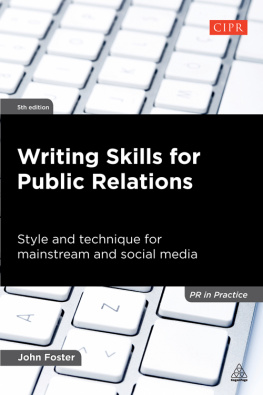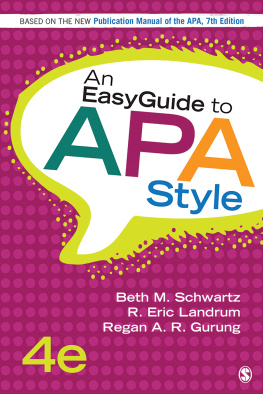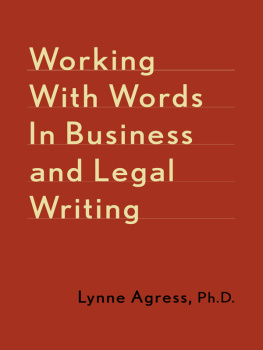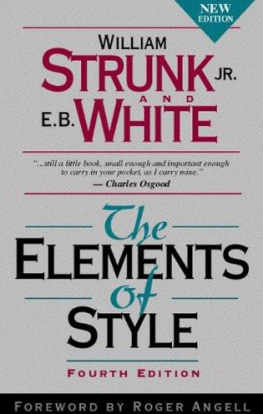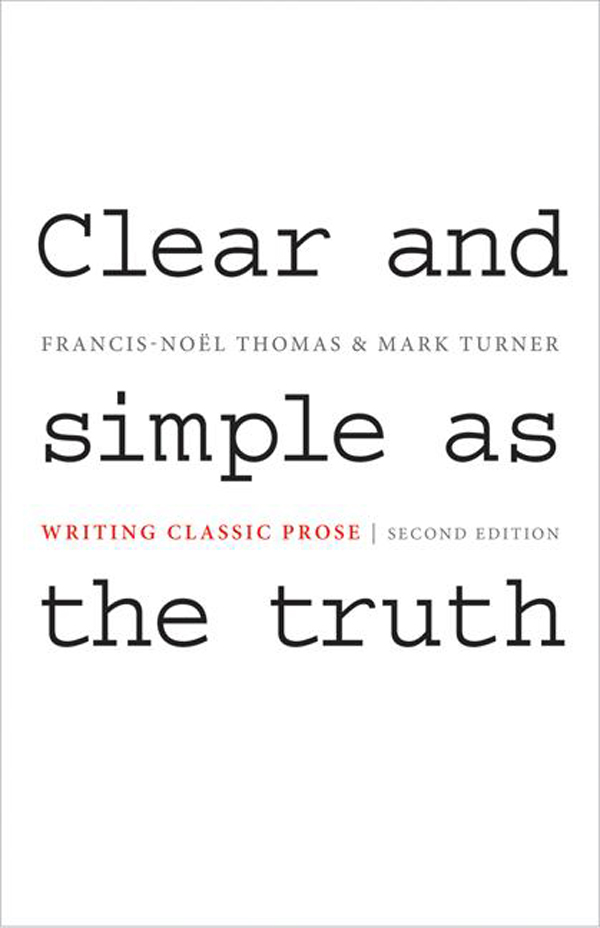Clear and Simple as the Truth
Clear and Simple as the Truth
Writing Classic Prose
Second Edition
Francis-Nol Thomas and Mark Turner
PRINCETON UNIVERSITY PRESS Princeton and Oxford
Copyright 2011 by Princeton University Press
Requests for permission to reproduce material from this work should be sent to Permissions, Princeton University Press
Published by Princeton University Press, 41 William Street,
Princeton, New Jersey 08540
In the United Kingdom: Princeton University Press, 6 Oxford Street,
Woodstock, oxfordshire ox20 1TW
press.princeton.edu
All rights Reserved
Library of congress Cataloging-in-Publication Data
Thomas, Francis-Nol, 1943
Clear and simple as the truth : writing classic prose / Francis-Nol Thomas and Mark Turner. 2nd ed.
p. cm.
Includes bibliographical references and index.
ISBN 978-0-691-14743-7 (pbk. : alk. paper) 1. English languageRhetoric.
2. English languageStyle. 3. Report writing. I. Turner, Mark, 1954 II. Title.
PE1408.T4155 2010
808.042dc22 2010035977
British Library Cataloging-in-Publication Data is available
This book has been composed in Minion Pro
Printed on acid-free paper.
Printed in the United States of America
10 9 8 7 6 5 4 3 2 1
Contents
Acknowledgments
The first edition of this book was planned and shaped at the National Humanities Center, Research Triangle Park, North Carolina.
Mark Turner gratefully acknowledges the subsequent support of the John Simon Guggenheim Memorial Foundation; the University of Maryland; and the Department of Cognitive Science, the Department of Linguistics, and the Center for Research in Language at the University of California, San Diego. Francis-Nol Thomas gratefully acknowledges the assistance of the University of Chicago Computing Organizations. The authors thank Wayne C. Booth, Robert E. Brown, Frederick Crews, Peter Dougherty, Jason Epstein, Jeanne Fahnestock, Beth Gianfagna, Peter Lang, and members of the Board of Princeton University Press for comments. We also thank the studentsespecially Jennifer Bacon and William FitzGeraldin Prose Style and in Classic Prose Style at the University of Maryland, who used this book in earlier drafts.
We thank Anne Savarese for suggesting that we undertake a second edition and for guiding the Studio to completion. We thank Arthur Evenchik, David Lee Rubin, and Vera Tobin for comments on the Studio.
Clear and Simple as the Truth
Clear and Simple as the Truth
Jai sur-tout cur la clart.... Mon style
ne sera point fleuri, mes expressions seront
simples comme la vrit.
Jean-Baptiste Le Brun
The teaching of writing in America is almost entirely controlled by the view that teaching writing is teaching verbal skillsfrom the placing of commas to the ordering of paragraphs. This has generated a tremendous industry, but the effect of this teaching is dubious. Why is American prose as bad as it is, even though we have more writing programs than ever?
Our answer is that writing is an intellectual activity, not a bundle of skills. Writing proceeds from thinking. To achieve good prose styles, writers must work through intellectual issues, not merely acquire mechanical techniques. Although it is true that an ordinary intellectual activity like writing must lead to skills, and that skills visibly mark the performance, the activity does not come from the skills, nor does it consist of using them. In this way, writing is like conversationboth are linguistic activities, and so require verbal skills, but neither can be mastered just by learning verbal skills. A bad conversationalist may have a very high level of verbal skills but perform poorly because he does not conceive of conversation as distinct from monologue. No further cultivation of verbal skills will remedy his problem. Conversely, a very good conversationalist may have inferior verbal skills, but a firm grasp on concepts such as reciprocity and turn-taking that lie at the heart of the activity. Neither conversation nor writing can be learned merely by acquiring verbal skills, and any attempt to teach writing by teaching writing skills detached from underlying conceptual issues is doomed.
But it is possible to learn to write by learning a style of writing. We think conceptual stands are the basis of writing since they define styles. To be sure, it is only through the verbal level that the conceptual level can be observed, and verbal artifactslike plumagehelp identify a style. Nevertheless, in general, a style cannot be defined, analyzed, or learned as a matter of verbal choices.
Writing is defined conceptually and leads to skills. This is true of all intellectual activities. There are skills of mathematical discovery, skills of painting, skills of learning a language, and so on. But in no case is the activity constituted by the skills. Great painters are often less skillful than mediocre painters; it is their concept of paintingnot their skillsthat defines their activity. Similarly, a foreigner may be less skillful than a native speaker at manipulating tenses or using subjunctives, but nonetheless be an incomparably better writer. Intellectual activities generate skills, but skills do not generate intellectual activities.
A style is defined by its conceptual stand on truth, presentation, writer, reader, thought, language, and their relationships. Classic style, for example, adopts a conceptual stand on these elements that can be expressed briefly, as it was by the eighteenth-century picture merchant Jean-Baptiste Le Brun in a book attempting to instruct amateurs in how to judge pictures: Jai sur-tout... cur la clart.... Mon style ne sera point fleuri, mes expressions seront simples comme la vrit. Above all, I have clarity at heart. My style will not be at all florid; my expressions will be simple as the truth. Classic style is in its own view clear and simple as the truth. It adopts the stance that its purpose is presentation; its motive, disinterested truth. Successful presentation consists of aligning language with truth, and the test of this alignment is clarity and simplicity. The idea that presentation is successful when language is aligned with truth implies that truth can be known; truth needs no argument but only accurate presentation; the reader is competent to recognize truth; the symmetry between writer and reader allows the presentation to follow the model of conversation; a natural language is sufficient to express truth; and the writer knows the truth before he puts it into language.
Le Bruns own writing could never be the result of any collection of verbal skills. It derives instead from the classic conception of the activity of writing, in which language can be fitted to truth and writing can be an undistorting window on its subject. Le Bruns concept of writing depends upon his stand on truth: there exist good and bad paintings; their qualities are independent of him or anyone; a lifetime of experience has refined his vision so that he can see the quality of a painting; the order of his presentation follows the order of truth, not of sensation; once he positions his reader to see what he himself has learned to see, the reader will be competent to recognize it. His concept of truth and its corollaries are intellectual stands, not technical skills. They define his performanceand their ability to do so is independent of their validity.
Le Bruns standthat he knows something true and can position his reader to see itallows him to claim that his writing is clear and simple as the truth. It also justifies his model scene of conversation in which one person speaks to another, unmotivated by gain or interest. This conceptual stand elevates clarity and simplicity to the position of prime virtues of classic style. It is apparent that a writer who does not adopt the stand that truth can be known or recognized could not claim that his writing is clear and simple as the truth.



